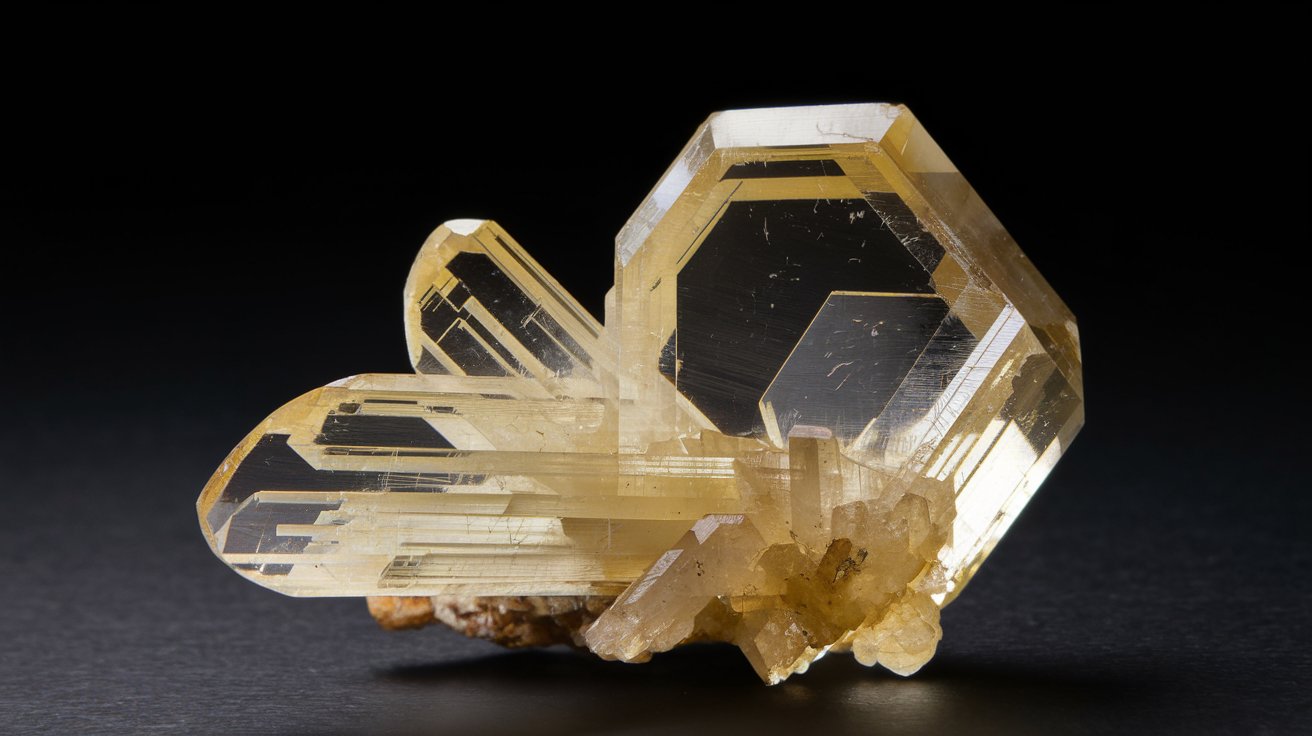
Zhanghengite is a rare and fascinating mineral named after the Chinese polymath Zhang Heng. This unique mineral, primarily composed of copper and zinc, was first discovered in the Luobusha ophiolite in Tibet. What makes Zhanghengite special? Its striking golden-yellow color and metallic luster make it stand out among other minerals. Found in ultramafic rocks, it often occurs alongside other rare minerals like chromite and magnetite. Why should you care about Zhanghengite? Its rarity and unique properties make it a subject of interest for geologists and mineral collectors alike. Whether you're a budding geologist or just curious about Earth's hidden treasures, learning about Zhanghengite offers a glimpse into the planet's geological diversity. Ready to dive into the world of Zhanghengite? Let's uncover 30 intriguing facts about this captivating mineral!
Key Takeaways:
- Zhanghengite is a rare, space-origin mineral named after a Chinese scientist. It has unique properties and is found in meteorites, making it a prized item for collectors and a valuable tool for scientific research.
- With its magnetic, conductive, and reflective properties, Zhanghengite is like a space treasure! It helps scientists study meteorites and inspires students to explore the wonders of geology and space science.
What is Zhanghengite?
Zhanghengite is a rare mineral named after the famous Chinese polymath Zhang Heng. This mineral is intriguing due to its unique properties and limited occurrence. Let's dive into some fascinating facts about Zhanghengite.
-
Named After Zhang Heng: The mineral honors Zhang Heng, an ancient Chinese scientist, inventor, and scholar known for his contributions to astronomy and seismology.
-
Discovery: Zhanghengite was first identified in 1986 in the Suizhou meteorite, which fell in Hubei Province, China.
-
Chemical Composition: It primarily consists of copper, zinc, and aluminum, with the chemical formula CuZnAl.
-
Crystal Structure: This mineral crystallizes in the cubic system, which means its atoms are arranged in a cube-like structure.
-
Color: Zhanghengite typically appears metallic yellow, similar to brass, due to its copper and zinc content.
-
Hardness: On the Mohs scale, Zhanghengite has a hardness of about 5, making it relatively soft compared to other minerals.
-
Density: It has a density of approximately 8.4 g/cm³, which is quite high for a mineral.
-
Occurrence: Besides the Suizhou meteorite, Zhanghengite has been found in other meteorites, indicating its extraterrestrial origin.
Unique Properties of Zhanghengite
Zhanghengite's distinct characteristics make it a subject of interest for mineralogists and collectors alike. Here are some of its unique properties.
-
Magnetic Properties: Zhanghengite exhibits weak magnetic properties due to its metallic elements.
-
Conductivity: It is a good conductor of electricity, thanks to its copper content.
-
Luster: The mineral has a metallic luster, giving it a shiny, reflective surface.
-
Fracture: Zhanghengite tends to break with a conchoidal fracture, meaning it breaks along smooth, curved surfaces.
-
Streak: When rubbed on a porcelain plate, it leaves a yellowish streak.
-
Transparency: It is opaque, meaning light does not pass through it.
-
Tenacity: Zhanghengite is brittle, breaking or shattering easily under stress.
Uses and Applications
While Zhanghengite is not widely used in commercial applications, it has some interesting uses and potential.
-
Scientific Research: Its unique properties make it valuable for scientific studies, especially in mineralogy and meteoritics.
-
Educational Purposes: Zhanghengite samples are often used in educational settings to teach students about meteorites and mineral properties.
-
Collectors: Due to its rarity and extraterrestrial origin, it is highly sought after by mineral collectors.
-
Jewelry: Although not common, some jewelers use Zhanghengite in unique, custom pieces.
-
Industrial Potential: Researchers are exploring its potential use in various industrial applications due to its conductive properties.
Zhanghengite in Meteorites
Zhanghengite's presence in meteorites provides valuable insights into the composition of celestial bodies.
-
Extraterrestrial Origin: Its discovery in meteorites suggests it forms under specific conditions in space.
-
Formation Process: Scientists believe Zhanghengite forms during the cooling and solidification of molten metal in meteorites.
-
Meteorite Studies: Studying Zhanghengite helps scientists understand the history and formation of meteorites.
-
Space Exploration: Its presence in meteorites can provide clues about the materials found on other planets and asteroids.
-
Cosmic Rarity: Zhanghengite's rarity in meteorites makes it a valuable find for researchers.
Fun Facts about Zhanghengite
Here are some lighter, fun facts about this fascinating mineral.
-
Meteorite Connection: Zhanghengite's extraterrestrial origin makes it a "space mineral."
-
Cultural Significance: Naming it after Zhang Heng highlights the importance of cultural contributions to science.
-
Collector's Item: Its rarity and unique properties make it a prized item for mineral collectors.
-
Educational Value: Zhanghengite samples are used to inspire interest in geology and space science among students.
-
Scientific Curiosity: Its unique combination of elements and properties continues to intrigue scientists and spark curiosity.
Final Thoughts on Zhanghengite
Zhanghengite, a rare and fascinating mineral, holds a unique place in the world of geology. Named after the Chinese polymath Zhang Heng, this mineral's discovery in 1986 added a new chapter to mineralogy. Its composition, primarily copper and zinc, sets it apart from other minerals. Found mainly in China, it has intrigued scientists and collectors alike. The mineral's metallic luster and distinct properties make it a subject of ongoing research. Understanding Zhanghengite not only enriches our knowledge of Earth's geological diversity but also highlights the contributions of historical figures like Zhang Heng. Whether you're a geology enthusiast or just curious about rare minerals, Zhanghengite offers a glimpse into the intricate and often surprising world beneath our feet. Keep exploring and who knows what other hidden gems you might uncover!
Frequently Asked Questions
Was this page helpful?
Our commitment to delivering trustworthy and engaging content is at the heart of what we do. Each fact on our site is contributed by real users like you, bringing a wealth of diverse insights and information. To ensure the highest standards of accuracy and reliability, our dedicated editors meticulously review each submission. This process guarantees that the facts we share are not only fascinating but also credible. Trust in our commitment to quality and authenticity as you explore and learn with us.


